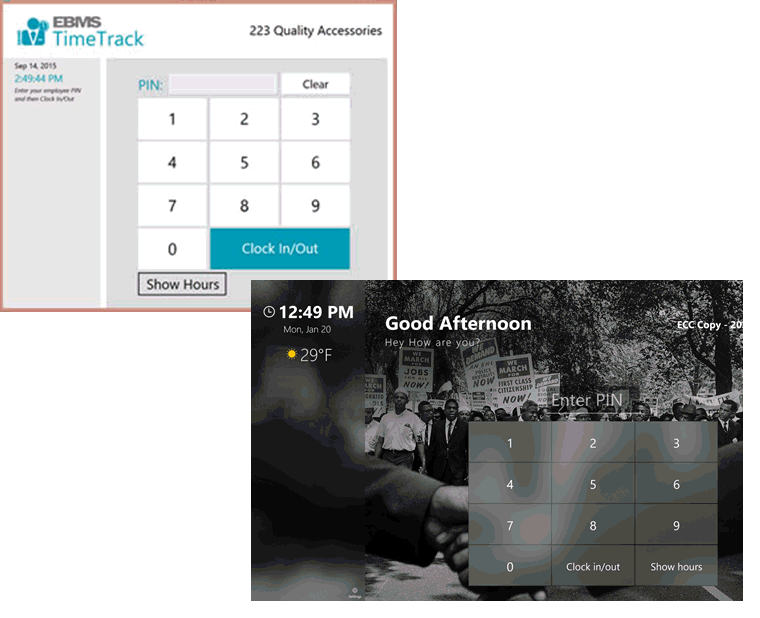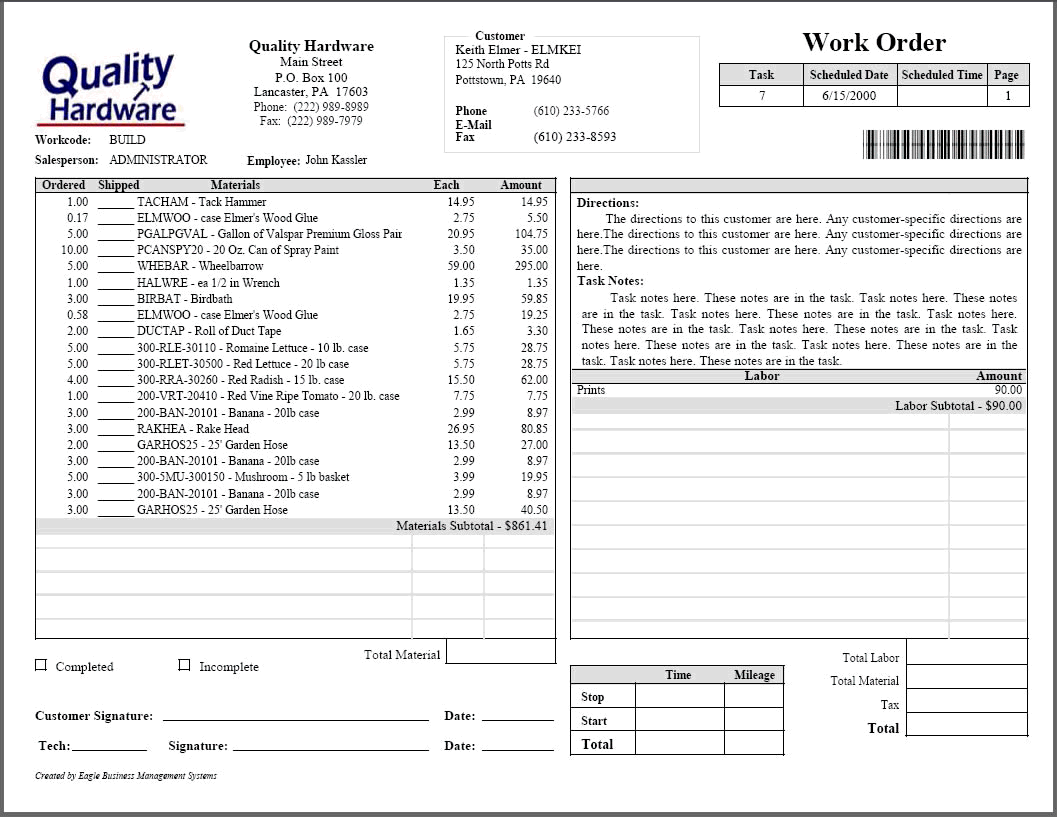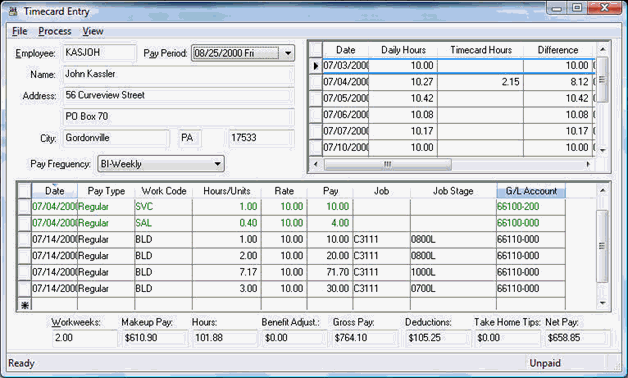
The EBMS software includes an option to record and manage labor for a 3rd party pay service. This option uses the strengths of the multiple work codes, time tracking, job costing, and task management within the EBMS software with the option of using a 3rd party to process taxes and other legal payroll requirements.
The Payroll Service option processes individual general ledger transactions for labor transaction and posts to a payroll payable G/L account. This makes the G/L journal entries simpler for the outside payroll service.
Scenario: Labor is an important asset within a building supply center that sells and manufactures building materials. A payroll service is used to process payroll taxes and deductions. The supply center tracks labor using EBMS time clocks to record the time spent within the sales, delivery, office, and manufacturing departments. Some employees allocate their time to multiple departments when they clock out of the Time Track time clock. The payroll service generates the employee pay via direct deposit with the exception of one employee. This employee requires a printed check which is calculated and printed within EBMS. Combining the power and details of an internal labor system with the convenience of a 3rd party payroll service allows this building supply center to maximize the effectiveness of their labor management.
Scenario: An agriculture equipment sales and service company tracks service and sales labor using work orders and time clocks. Managing the actual time for both time and material service work orders as well as the labor cost for parts sells, assembly, sales commissions, and clerical is important to the owners. The EBMS task system gives the service department the tools to measure time and record service details. Manage has the employees record various non-billable time such as worker service, clean up, and meetings along with billable time. The resulting bar graph summary is used as a motivation for employees. The time summary is uploaded to a payroll service who calculates taxes and generates pay checks. The resulting EBMS financial journal is merely recording the employee’s pay check and debiting payroll payable. The detailed labor expense transactions are created within EBMS.
Scenario: A construction business uses both hourly and salary pay as well as a comprehensive piecework payroll system to pay the 600 to 800 builders and staff within the company. The employee’s start and stop time is collected using the foreman's Android and IOS phones on the field. The labor module of EBMS takes the piecework pay along with the non-productive time, rest/break time, and benefit pay and calculates payroll along with payroll taxes and various deductions. EBMS is used to print payroll checks for most employees as well as direct deposit for some. The payroll details including the withholdings are communicated to the 3rd party payroll service using a CSV file for then to manage and file taxes as well as handle HR needs. The time collection, the flexible pay type options, and payroll process within EBMS fits the payroll needs of the company well.

Review Time Track > MS Windows Application for time clock information.

Review Tasks > Using Tasks as Work Orders for information on tracking labor on work orders.

Review [Financials] Job Cost > Job Costs > Payroll Expenses for instructions to record labor for jobs.
Review Piecework Pay > Overview for details on processing piecework pay.
Review Flag Pay > Overview for details on managing task flag pay.


Review the Configuring EBMS for 3rd Party Pay Service section to configure EBMS for an optional payroll service.
Review the Processing 3rd Party Pay section for instructions on processing regular pay within the EBMS software.
Review the Posting G/L Transactions from a 3rd Party section for more details on posting accounting transactions within EBMS.